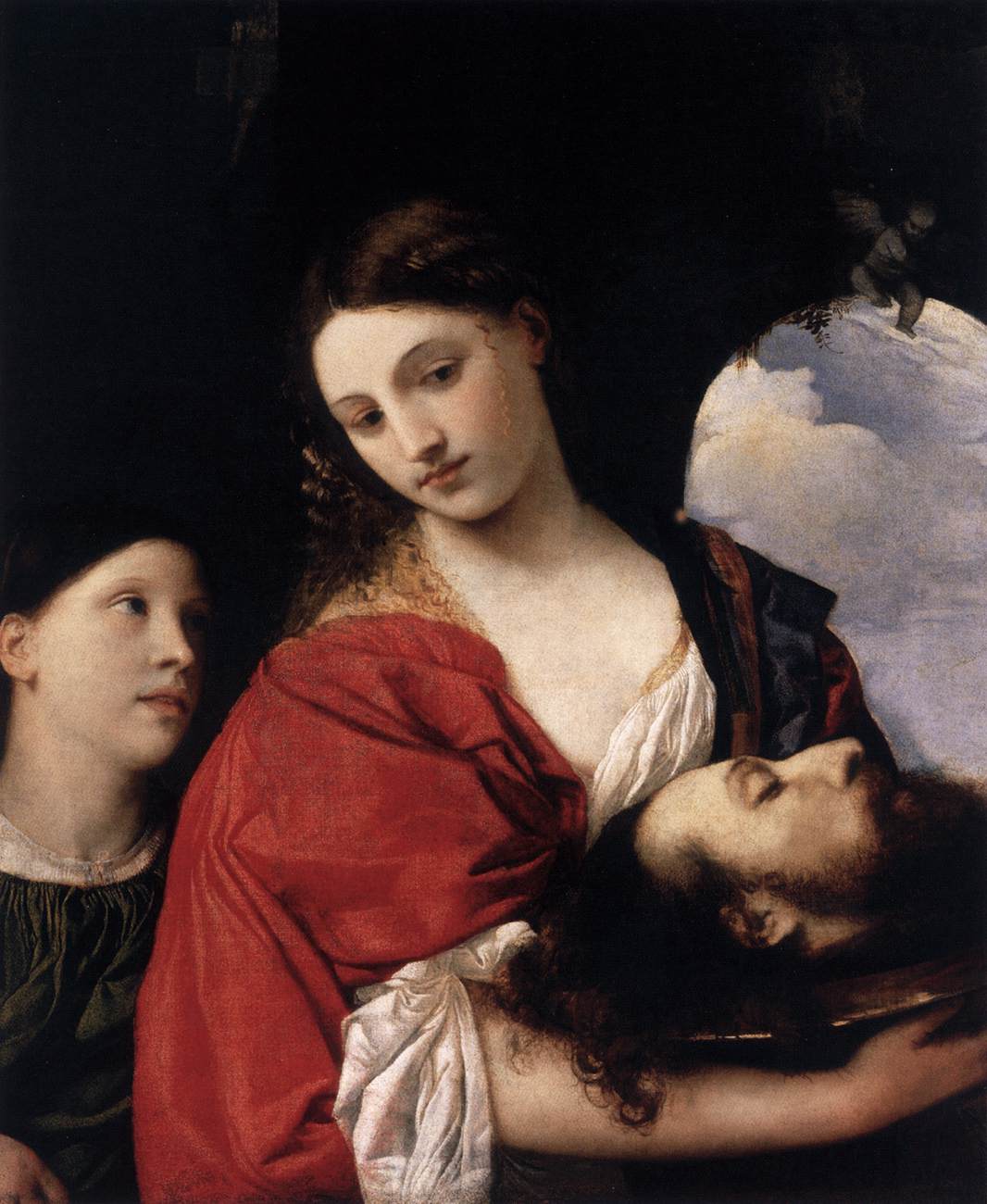23/100
Judith and Holofernes
-
Artist
Titian
-
Year
1863-1864
-
Culture
Italian
-
Date of Copy
It seems unclear if this is depicting Judith and Holofernes, vs Salome and St John the Baptist. Even Wikipedia's entry for this painting is titled "Salome", but the very first sentence in the entry calls it "Judith with the Head of Holofernes." Turns out that it's pretty confusing to have two different biblical stories where a woman beheads a powerful man. Another thing that's confusing--Judith is a hero who beheads an enemy, whereas Salome is an evil seductress who indirectly beheads a saint. So this painting is either of a heroine or a villain depending on what you think the title is.
If you don't know (I definitely didn't know, not being raised in any religion), the story of Judith and Holofernes is about a widow named Judith who defeats an Assyrian general who is about to destroy her home. Thanks to his desire for here, she gets invited to his tent. Once he passes out drunk, she beheads him, saving her home. She is a constant theme in art history.
Salome is about a woman who performs a dance for her stepfather Herod's birthday. Enchanted by the dance, he grants her any favor she asks, and she asks for the head of St. John the Baptist on a silver platter. Tangent: Oddly, I knew about Salome much earlier because Michelle Kwan, a childhood hero, did an iconic ice skating routine themed around Salome's dance of the seven veils when she was 15. Before that program, her most successful skating program had been as Peter Pan. The Salome routine, where she skated as the seductive temptress, basically marked her transition from childhood to adulthood. I read about all this in her autobiography, which I bought at a Scholastic book fair in elementary school, and all those associations with Salome have stuck with me since.
Childhood memories aside, whether this painting is of Judith or Salome, this biblical woman's ability to kill is tied directly to her ability to seduce. This is a constant theme in Western culture--power and sexiness come hand in hand. This is often depicted as morally bad (even if it's sometimes, as in the case of Sandys, bad in a thrilling and hot way). It tells us that the only way to have power and agency is to be seductive, and to be powerful and seductive is evil and leads to death. Going through life seeing picture after picture, hearing story after story, reinforcing this idea is enough to give us all complexes, wouldn't you say?
Titian is a legendary Renaissance painter, based out of Venice (whereas many of the greats like Da Vinci were based out of Florence). In the art history overview books I've been reading, he's known as a master of color, and of unusually loose brushwork for the time period.
I picked this painting to copy when I was a bit behind and needed something simple. It is, admittedly, a bit phoned in...oh well.
Reference image from Wikipedia. It is now in the Doria Pamphilj Gallery in Rome.

